As mentioned in my previous report from this traditional Cornish slate quarry, the 30 ton New Holland is the biggest machine in the quarry, and it’s this prime mover that is the essential key to the production of the original Cornish slate product. Its work at the quarry face is where the entire process begins. The slate is initially extracted by drilling holes in the rock, into which explosives are loaded. In years gone by, this would have been “Blackpowder” or “Gunpowder” as it is more commonly known. Today however newer, safer and easier to use pyrotechnic breaker capsules are employed. These capsules burn relatively slowly, releasing gases which split the rock along pre-existing joints rather than exploding causing the rock to shatter. 
This technique means the rock generally remains in position on the rock face. It’s at this point that the New Holland E305C takes over. The machine equipped with its hydraulic hammer is used to further split the blocks and manoeuvre them into place, so they can be picked up by a telehandler for transporting to the saw shed.
However there are other smaller machines in the quarry that perform an equally vital role in day to day production. Including this old Moxy 6225B dumptruck, although being rather an old machine, it is still more than capable of turning in a good days work in the quarry. 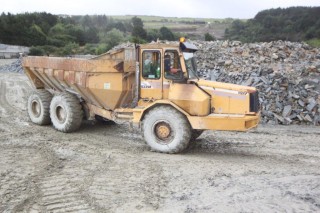
The Moxy is seen here working with another older machine in the fleet in the shape of a Case CX130. The second hand Case machine is loading silt from a small lagoon outside of the saw shed, which is where the waste by product of the cutting process is collected. The Moxy then takes the waste to an old part of the quarry, that is now being backfilled. 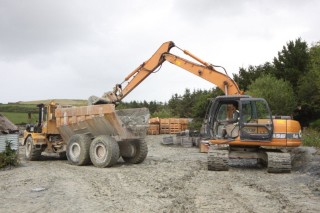
Another essential machine in the quarry is this Manitou MLT 845-120 LSU Turbo telescopic handler, which was purchased to take over from a wheeled loading shovel that they used to use for this application. Quarry manager John Ferret said, “it has become a far more useful tool to have in the fleet than the wheeled loader, with its ability to be able to boom out its load of slate block directly into the saw shed”. 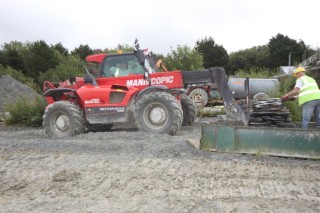

Another smaller and older model of Manitou, a MLT 627 Turbo machine is also deployed in the quarry for lifting lighter loads and loading work in general. 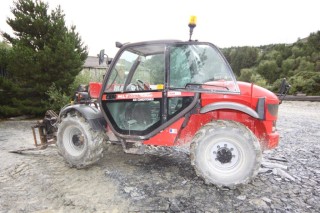
Blocks of slate up to two tonnes in weight are loaded onto the sawbed and cut using a diamond saw into the required sizes for the particular size of roofing slate required at the time. These blocks are then taken to the splitting shed, where a team of highly skilled craftsmen carefully split the slates by hand. 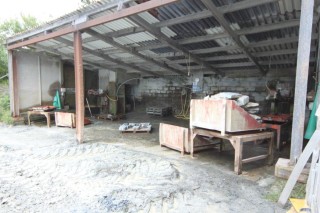
I was highly impressed to see the way these men split the slate along the cleavage planes to produce a natural riven roofing slate which is then given its distinctive bevelled edges using a dressing machine, which consists of two revolving blades. I had never seen anything like this before; in a way it was a bit like going back in time and a total contrast to the new excavator which was the main focus of my visit to the quarry. 

These men are highly skilled at what they do and although advances in technology have changed the way in which slate is quarried, it is still heavily dependent on the skill of the slate quarrymen in identify roofing quality slate; extract the block without damaging it; saw the slate in line with the grain and limit the waste and of course to finish the whole job by hand. And to think it all starts down in this hole in the ground! 
It’s a real credit to everyone in the team who work at this quarry every day, and I would like to thank everyone involved during my visit for making it a very enjoyable and interesting visit, despite the foul weather which came in towards the end!

